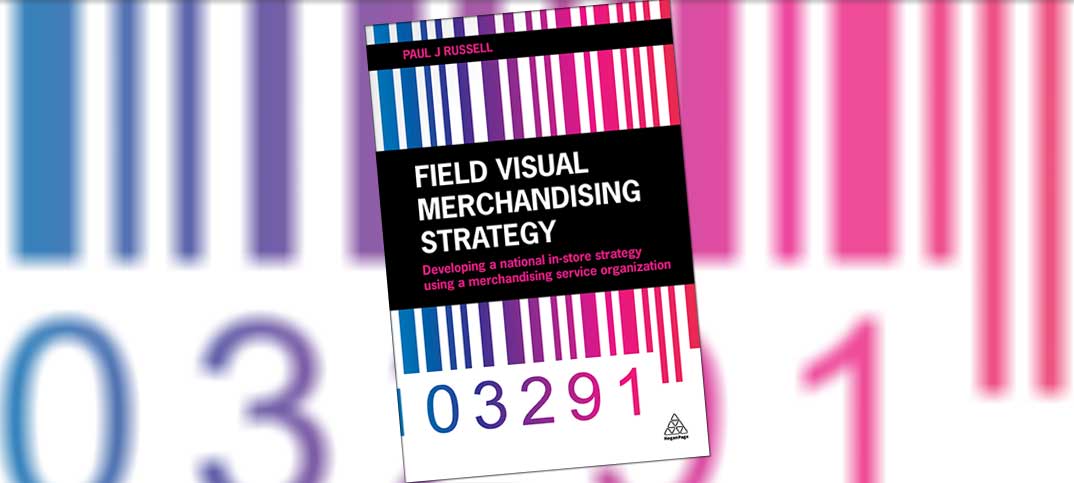“The retail sales floor has become a battlefield. Each brand is fighting for the same customer and wants to ensure its merchandise is on the sales floor.” With those 27 words of blurb I was hooked: Field Visual Merchandising Strategy was a book I needed to read.
Then it arrived and I regretted promising the publisher a review in January in return for the print copy. Paul J Russell has set out to write the definitive text book for retail marketeers, which guides readers step by step through devising their strategy, and identifies ways to get an advantage over the competition.
The cover features a barcode. No money for a great picture of a brilliant in-store display. There is no colour inside. There are lots of timelines and there is lots of structure.
Russell is clearly a details man. And that is what makes this book so good. He spells out step by step what you need to do to ensure that a £20 store visit by a field sales merchandiser adds value.
And he spells out where things go wrong. Mostly because of mission creep. People being asked to do just one more task, agreeing to do so because they think it will take just a
tick, and then finding it takes half an hour.
What is one of the biggest causes of failure? It is failing to treat the retailer with respect. While Russell has mainly worked in the US, helping major multiple retailers sell apparel, he identifies the problem of merchandisers turning up in-store and attempting to relay a retailer’s shelves without asking permission. Communication can fail in hundreds of ways. He has a tool to fix that.
Of more direct interest to retailers is his explanation of how to put together a display by mixing colours and patterns. In clothing displays this is about quickly showing the entire range by layering one thing on top of another, which gives the reader ideas about why cross category promotions work.
He lists the common moods that can be created through colour. Green, for example, moves from nature and calmness at the core, to solidity and security when it is dark, nostalgia and calmness when it is blue-green, and youthfulness, freshness and happiness when it is yellow-green.
Merchandising and visual merchandising are two distinct skill sets, Russell argues. Merchandisers focus on presenting product in a uniform, balanced way that is pleasing to the eye. Visual merchandising is about creativity and drawing the consumer to the display so that they will buy. It is about attracting your target customer.
In fashion, different fixtures do different jobs. Once you have caught the eye of the shopper, you need to organise clothes so people can intuitively find the sizes they want. Russell doesn’t discuss how this is
done in consumer packaged goods. But again the lessons are easily transferred with a bit of thought.
The process drives success in Russell’s world. A one-hour store visit starts with a visual inspection and walk-through with the shopkeeper, then merchandising, then stocking the display and then a final walk-through to check the outcome.
This is a great map book for excellent display – and if you are in the market for such a guide, I warmly recommend it.
Field Visual Merchandising Strategy by Paul J Russell is available to buy online.



Comments
This article doesn't have any comments yet, be the first!